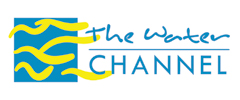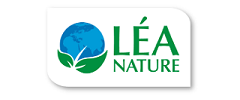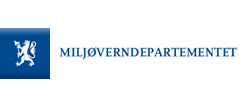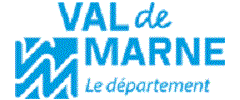Water Safety Plan Compendium: Local Action for Safe Water
Educational Materials for Teachers for Developing Water Safety Plans with Youth in Rural Bulgarian Schools
14.11.2012

WECF and its Bulgarian partners Earth Forever and EcoWorld2007 launched a comprehensive Compendium for teachers, NGOs, water authorities and administration giving them background information and methodologies how to apply Water Safety Plans in small communities.
Authors
Margriet Samwel,WECF
Friedemann Klimek, WECF
Claudia Wendland, WECF
Diana Iskreva, Earth Forever
Bistra Mihaylova, Ecoworld 2007
Aglika Yordanova, Ecoworld 2007
What is a Water Safety Plan?
Water Safety Plan is a tool for step-by-step comprehensive risk assessment and risk management of water safety from catchment to consumer, with the aim of consistently ensuring the safety and availability of drinking water supply for all.
Background
Better protection and management of drinking water sources is possible on the basis of identification and assessment of weaknesses and strengths, threads and opportunities. Knowledge of water quality, water pollution, potential cause of contamination are essential for the identification of possible risks for water sources. A good water safety plan (WSP) would be one of the efficient approaches to achieve and maintain high drinking water quality and to minimise water related diseases.
On the community level, citizens could collaborate with all other concerned stakeholders to play an important role in supporting better protection and management of the local drinking water supply system.
In a typical small community, only few of the citizens would have knowledge on sustainable and safe management of a drinking water supply system. The WHO very much welcomes the launch of this compendium as it fills the gaps between practical and theoretical know-how as well as between local and political level.
The compendium consisting of educational materials and guidance, presented in 19 modules, was created to serve community activists, teachers and NGOs who intend to develop and implement a Water Safety Plan for their community.
The WSP compendium was realised in cooperation with our Bulgarian project partners - Earth Forever and EcoWorld 2007, and with the financial support of Deutsche Bundesstiftung Umwelt (DBU). The compendium was developed and successfully tested by the village communities in the frame of the project “Drinking Water Safety Plans as a tool for environmental education for rural youth and communities in Bulgaria (Trinkwassersicherheitskonzept zur Umweltbildung für Lehrkräfte als Multiplikatoren für Kinder und Jugendliche am Beispiel ländlicher Gemeinden in Bulgarien)”, and is supposed to serve well to other smaller community in the European Region.
The WSP Compendium was announced at the fifth meeting of the Working Group on Water and Health of the Protocol on Water and Health (12-13 Oct. 2012, Geneva). The launch took place at the Bulgarian seminars „Water Safety for Small Settlements in Bulgaria (16 Oct. 2012, Stara Zagora and 18 Oct. 2012, Sofia).
Download separate chapters and modules (English)
List of tables and boxes, figures and graphics
Introduction to the Water Safety Plan Compendium
2. Module – Introducing Water Safety Plans – For small-scale piped water distribution systems
3. Module - About (drinking) water and water cycle
4. Module - Drinking Water Sources and Extraction
5. Module - Drinking Water Treatment and Storage
6. Module – Drinking Water Distribution – Pipes
7. Module – Drinking Water Quality
8. Module – Sanitation and Wastewater Treatment
9. Module – WASH; Water, Sanitation and Hygiene
11. Module – Utilisation of Water in our Daily Life
13. Module – Financing Water and Wastewater Services
14. Module – Regulations on Water
15. Module – Step‐by‐step: 10 Relevant Practical Activities for developing a WSP
16. Module – Practicing Simple Water Quality Tests
17. Module – Mapping the Village / Visualisation of the Analyses Results
18. Module – Risk Assessment of Small-Scale Water Supply Systems
19. Module – Conducting Interviews
Download separate chapters and modules in Bulgarian
"Планове за безопасност на водата"
Списък от таблици, фигури и графики
Въведение в Ръководството "Планове за безопасност на водата"
3. Модул - За водата и кръговрата на водата
4. Модул - Източници на питейна вода и вододобив
5. Модул - Пречистване и съхранение на питейната вода
6. Модул - Разпределение на питейната вода - тръби
7. Модул - Качество на питейната вода
8. Модул - Санитария и пречистване на отпадъчните води
9. Модул - WASH: Вода, Санитария и Хигиена
10. Модул - Опазване на водите
11. Модул - Употреба на водата в ежедневието
12. Модул - Съхранение на водата
13. Модул - Разходи, свързани с водата
14. Модул - Законодателство, свързано с водите
15. Модул - Стъпка по стъпка: 10 Предложения за практически дейности в разработването на ПБВ
16. Модул - Упражнения с лесни водни тестове за качеството на водата
17. Модул - Картографиране на населеното място / Онагледяване на резултатите от анализите
18. Модул - Оценка на риска за малки водоснабдителни системи
19. Модул - Провеждане на интервюта


































